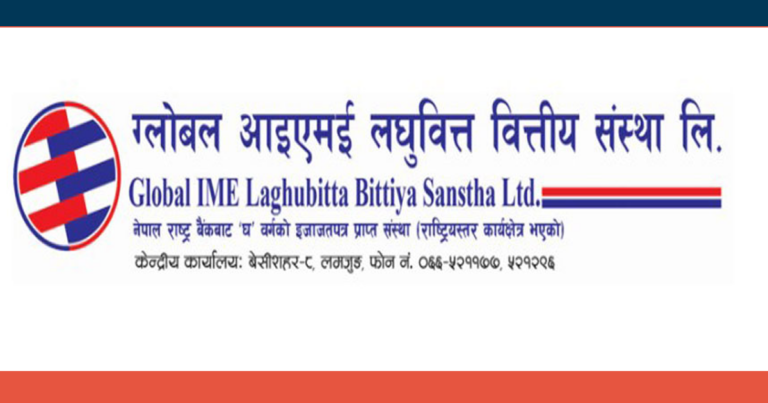Kathmandu: Global IME Microfinance has reported a remarkable 121.91 percent year-on-year increase in net profit, fueled by business expansion, higher net interest income, reduced non-performing loans (NPLs), and lower loan loss provisioning despite an overall rise in lending.
According to the unaudited financial statement for fiscal year 2024/25, the microfinance institution earned Rs 235.87 million in net profit, up from Rs 106.29 million in the previous year. This sharp growth pushed earnings per share from Rs 17.16 to Rs 38.11.
The company attributed its improved profitability partly to lower interest rates in the banking sector, which reduced the cost of funds. The lower financing costs had a direct positive impact on its margins.
Distributable profit also saw a significant jump. The microfinance institution had retained earnings of Rs 39.29 million from the previous year when no dividend was declared. In FY 2024/25, distributable profit reached Rs 132.61 million, bringing total retained earnings to Rs 171.90 million. With a paid-up capital of Rs 618.9 million, its dividend-paying capacity now stands at 27.78 percent.
Total reserves and retained earnings have climbed to Rs 713.91 million.
Loans outstanding rose from Rs 8.50 billion in mid-2024 to Rs 9.836 billion in mid-2025. Net interest income increased from Rs 631.46 million to Rs 759.73 million, while fee and commission income added Rs 85.2 million, bringing total operating income to Rs 844.9 million.
The NPL ratio declined from 4.07 percent to 3.62 percent. Even with fewer bad loans, the institution allocated Rs 93.5 million for possible loan losses — down from Rs 150.9 million in the previous year.
Reduced provisioning, coupled with increased income, pushed operating profit up from Rs 191 million to Rs 337.2 million, driving the substantial net profit growth.
The capital adequacy ratio improved from 10.38 percent to 10.91 percent, and the base rate stood at 11.14 percent at the close of the fiscal year.
This robust performance underscores the institution’s strengthened financial footing, bolstered by expanding credit portfolios, efficient risk management, and lower funding costs.



Comment Here